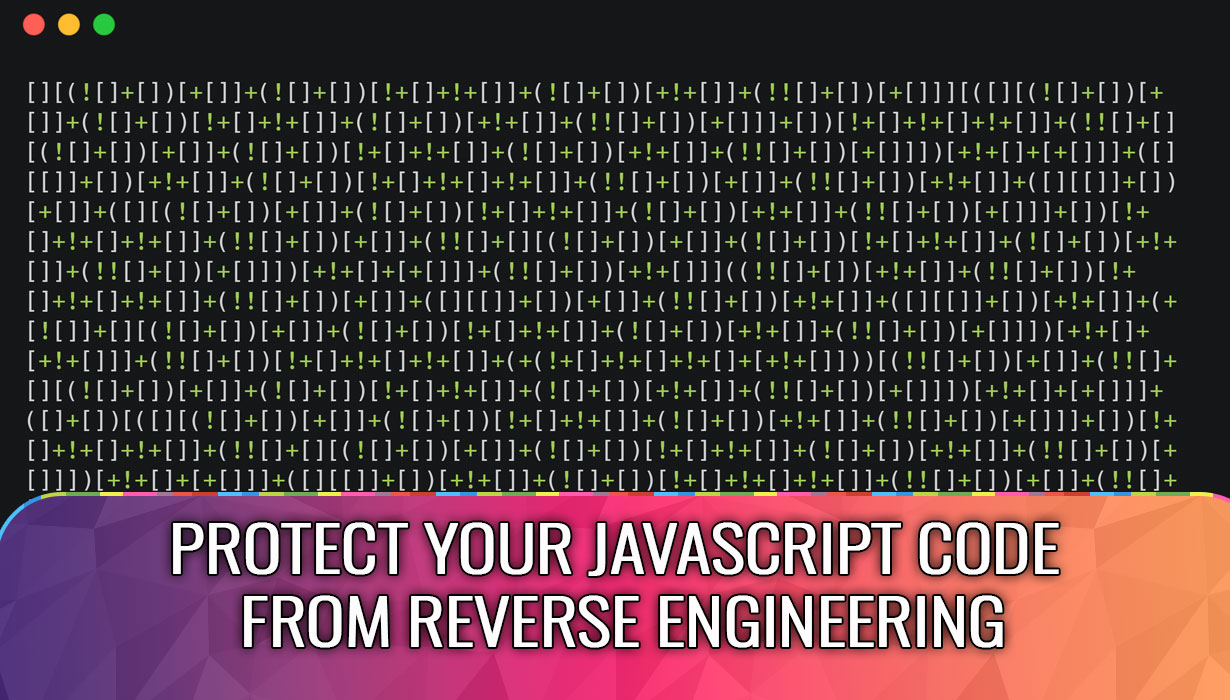
10
Prevent Code Thef with our JavaScript Obfuscator & Minifier
Protect your JavaScript source code from theft and reverse-engineering. Our free online JavaScript Obfuscator transforms code into a secure, unreadable format while maintaining full functionality. No registration required.
JavaScript Obfuscator - Protect Your Source Code
Client-side JavaScript is inherently visible to anyone who knows how to view a webpage's source. Protect your intellectual property, business logic, and algorithms from theft, piracy, and reverse-engineering with our advanced JavaScript Obfuscator. This free tool transforms your readable code into a secure, functionally equivalent version that is extremely difficult to understand, copy, or modify—while maintaining 100% execution capability.
How to Use Our JavaScript Obfuscator
- Paste Your Code: Copy and paste your clean JavaScript code into the source input area.
- Configure Options: (Optional) Adjust obfuscation strength, string encoding, and control flow flattening.
- Obfuscate Code: Click the "Obfuscate" button to instantly transform your code.
- Copy & Use: Copy the secured, obfuscated code and use it in your production environment.
Why Obfuscate Your JavaScript Code?
- Protect Intellectual Property: Safeguard your unique algorithms, business logic, and proprietary code from competitors.
- Prevent Code Theft: Make it significantly harder for others to copy and reuse your hard work without permission.
- Deter Reverse Engineering: Protect sensitive logic like license checks, API keys (when combined with other security measures), and authentication routines.
- Reduce Piracy: Add a layer of protection to commercial web applications and scripts.
Advanced Obfuscation Techniques We Use
Identifier Renaming
- What it does: Replaces meaningful variable and function names (e.g., calculateTotal, userEmail) with short, meaningless names (e.g., _0x1a2b3c, a, b).
- Impact: Makes code logic nearly impossible to follow.
String Encryption
- What it does: Encodes string literals in your code and decrypts them at runtime.
- Impact: Hides important text, URLs, and messages from static analysis.
Control Flow Flattening
- What it does: Transforms the normal code execution flow into a complex state machine with switches and loops.
- Impact: Makes the program logic extremely difficult to trace and understand.
Dead Code Injection
- What it does: Inserts irrelevant, non-executed code that doesn't affect functionality but adds confusion.
- Impact: Adds significant noise to deter automated analysis tools.
Obfuscation vs. Minification: What's the Difference?
- Minification: Removes whitespace, comments, and shortens variable names to reduce file size. Code remains relatively understandable.
- Obfuscation: Actively transforms code to make it deliberately hard to understand and reverse-engineer, while also reducing size.
Best Practices for JavaScript Obfuscation
- Test Thoroughly: Always test obfuscated code to ensure it functions identically to the original.
- Keep Originals Safe: Maintain unobfuscated source code in version control for development and debugging.
- Use as Part of a Security Strategy: Obfuscation is one layer of protection, not a complete security solution.
- Balance Performance: Higher obfuscation levels may impact runtime performance slightly—test for your specific use case.
Common Use Cases
- Commercial Web Applications: Protect premium features and business logic
- WordPress/Shopify Plugins: Secure commercial plugin code
- Web Games: Protect game mechanics and assets
- SaaS Applications: Secure client-side validation and processing logic
- License Verification: Obfuscate license checking routines
- Educational Content: Protect paid tutorial code examples
Frequently Asked Questions (FAQ)
Q: Is obfuscated JavaScript 100% secure?
A: No. Obfuscation is a strong deterrent, not absolute protection. A determined reverse engineer with enough time and resources can eventually deobfuscate code. However, it provides excellent protection against casual copying and significantly raises the effort required for analysis.
Q: Will obfuscation break my code?
A: Our tool is designed to produce functionally identical code. However, we recommend always testing the obfuscated output thoroughly, especially when using advanced obfuscation options.
Q: Can I obfuscate Node.js/server-side code?
A: While technically possible, obfuscation is primarily valuable for client-side code that users can easily view. Server-side code should be protected through physical and network security measures.
Q: Does obfuscation affect performance?
A: There can be a minor performance impact due to the added decryption routines and control flow complexity. For most applications, this impact is negligible, but for performance-critical code, test thoroughly.
Q: Is the obfuscation process reversible?
A: No. Our obfuscation is designed to be a one-way transformation. Always keep your original, unobfuscated source code in a safe location.
Complete Your Development Workflow with A10ROG
After securing your code, explore our other essential free developer tools:
- JavaScript Formatter: Beautify and format minified code
- JSON Validator: Validate and format JSON data
- HTML Minifier: Reduce HTML file size
- CSS Compressor: Optimize your stylesheets
Contact
Missing something?
Feel free to request missing tools or give some feedback using our contact form.
Contact Us